Arabic Dialect AI Chatbot
#AIContentCreation, #Automation, #MachineLearning
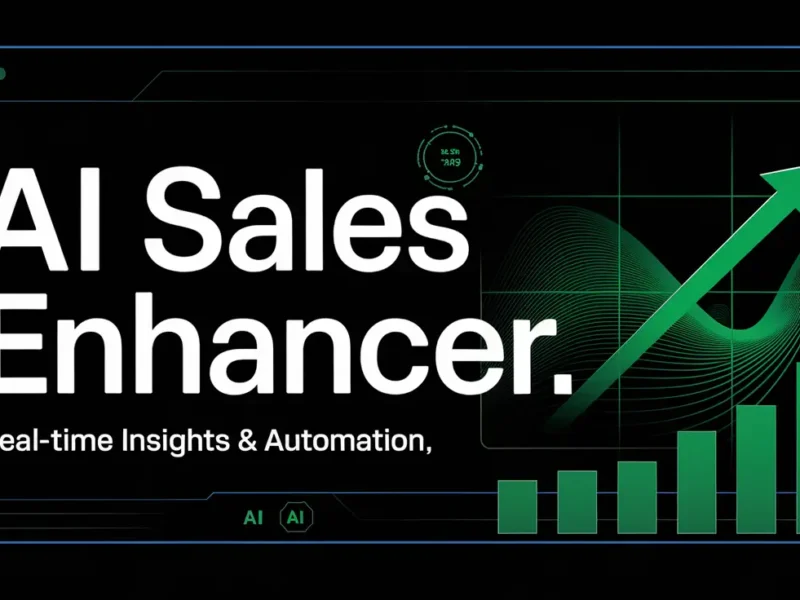
#AIContentCreation, #Automation, #MachineLearning
There are always some stocks, which illusively scale lofty heights in a given time period. However, the good show doesn’t last for these overblown toxic stocks as their current price is not justified by their fundamental strength.
Developed an AI-powered chatbot with proficiency in the Arabic dialect, enhancing customer interactions and supporting marketing efforts through culturally attuned communication.
Utilized OpenAI’s GPT, Twilio APIs, and Eleven Labs to create a robust AI chatbot with dialect-specific capabilities for customer service.
NLP-Powered Chatbot Development
The “AI Automation and NLP-Powered Chatbot for Data Analysis” project focused on developing a sophisticated AI chatbot capable of understanding and fluently responding in Arabic, with a particular emphasis on the Arabic dialect. This project was initiated to address the unique challenges posed by the Arabic language, which features numerous dialects and cultural contexts. The chatbot was designed to provide customer service and support marketing efforts, ensuring that interactions were not only efficient but also culturally appropriate and engaging.
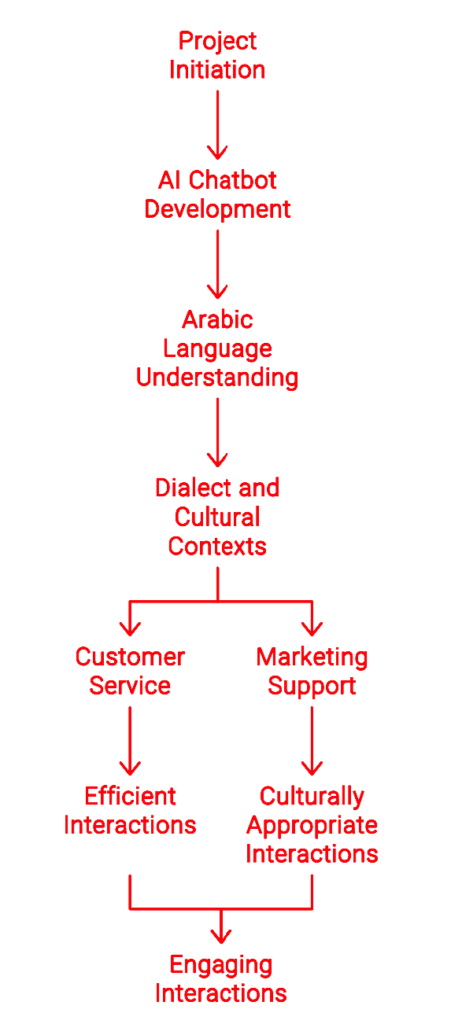
The project began with the recognition of a need within the client’s operations to provide more effective and culturally sensitive customer service through AI. The primary objective was to develop a chatbot that could understand the nuances of the Arabic dialect, ensuring that customer interactions were both natural and contextually relevant.
A strategic plan was developed, focusing on leveraging advanced natural language processing (NLP) to handle the complexities of Arabic. The plan included the integration of voice generation technologies to ensure that the chatbot could provide both text and voice responses in a manner that was consistent with local cultural expectations.
The design phase involved creating initial prototypes of the chatbot to test its ability to understand and respond accurately in the Arabic dialect. This phase included the development of workflows for data analysis and content distribution, ensuring the chatbot could manage various customer service and marketing tasks effectively.
The development phase focused on building the chatbot using OpenAI’s GPT technology, which was trained specifically on Arabic language data. Twilio Communication APIs were integrated to manage real-time interactions, and Eleven Labs was utilized for voice generation, ensuring that the chatbot could engage customers through both text and speech. Python was used to develop custom algorithms for data processing and analysis.
Extensive testing was conducted to ensure the chatbot’s accuracy in understanding and responding to inquiries in the Arabic dialect. This phase also included testing the integration of voice interactions and refining the chatbot’s responses to ensure they were culturally sensitive and appropriate.
The final chatbot was deployed across the client’s customer service and marketing platforms, providing a seamless experience for users. The launch included training sessions for the client’s teams to ensure they could manage and optimize the chatbot’s performance effectively.
Post-launch, ongoing support was provided to monitor the chatbot’s performance and gather user feedback. This included making updates to the NLP models and voice generation capabilities to improve functionality and user experience.
This project exemplifies the power of AI in enhancing customer service and marketing efforts through culturally attuned, dialect-specific communication, providing businesses with the tools they need to engage effectively with their customers.
Project Goals: To develop an AI chatbot proficient in the Arabic dialect, enhancing customer service and marketing efforts through culturally attuned interactions.
Problem Statement: Businesses operating in Arabic-speaking regions need an AI-driven solution that can effectively engage with customers in their native dialect while maintaining cultural sensitivity.
Role and Responsibilities: As the Project Manager and AI Integration Specialist, I oversaw the development and deployment of the chatbot, ensuring it was capable of understanding and responding in the Arabic dialect. I was also responsible for integrating the chatbot with the client’s existing platforms and optimizing its performance.
Team Collaboration: Collaborated with data scientists, linguists, and software developers to ensure the chatbot met the project’s objectives and provided a natural, culturally sensitive user experience.
Approach: Utilized Agile methodology, allowing for iterative development and continuous testing to refine the chatbot’s capabilities and performance.
Tools and Technologies: OpenAI’s GPT for NLP, Twilio APIs for communication, Eleven Labs for voice generation, Python for algorithm development, and AWS for secure data storage and management.
Key Steps: Conceptualization, design and prototyping, development and implementation, testing and refinement, final delivery, and post-launch support.
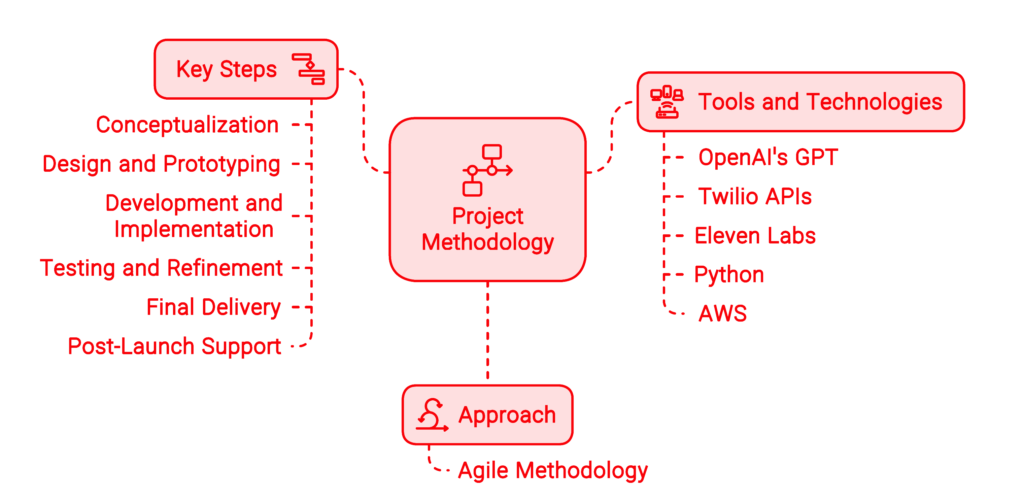
Challenges Faced: Ensuring the chatbot could accurately interpret and respond in the Arabic dialect, integrating voice interaction capabilities, and maintaining cultural sensitivity throughout all interactions.
Solutions Implemented: Developed advanced NLP models specifically trained on Arabic dialects, utilized voice generation technologies to provide natural-sounding responses, and incorporated cultural sensitivity into all chatbot interactions.
Outcomes : The chatbot significantly improved customer engagement and satisfaction, providing timely, culturally appropriate responses in the Arabic dialect. It also supported the client’s marketing efforts by facilitating interactive campaigns and personalized customer interactions.
Client/Stakeholder Feedback: The client reported a marked improvement in customer satisfaction and engagement, with the chatbot becoming a key tool in their customer service and marketing strategies.
Impact: The project enabled the client to maintain a strong cultural connection with their customers while leveraging the efficiency and scalability of AI-driven interactions.


#AIContentCreation, #Automation, #MachineLearning
There are always some stocks, which illusively scale lofty heights in a given time period. However, the good show doesn’t last for these overblown toxic stocks as their current price is not justified by their fundamental strength.
Automated sales call summarization and competitor analysis, providing real-time insights to enhance sales strategy and team productivity.
Integrated Gong, OpenAI’s ChatGPT, Slack, and Make.com to automate and enhance sales call processing and competitor analysis.
AI Automation for Sales Teams
The “AI-Powered Sales Call Summarizer and Competitor Analysis Automation” project was developed to significantly enhance the productivity and strategic capabilities of the client’s sales teams. The primary objective was to automate the summarization of sales calls and generate competitive insights in real-time, enabling the sales team to focus on higher-value strategic actions. This system was built using cutting-edge AI technologies, including OpenAI’s ChatGPT, and was integrated with existing tools such as Gong and Slack to ensure seamless operation.
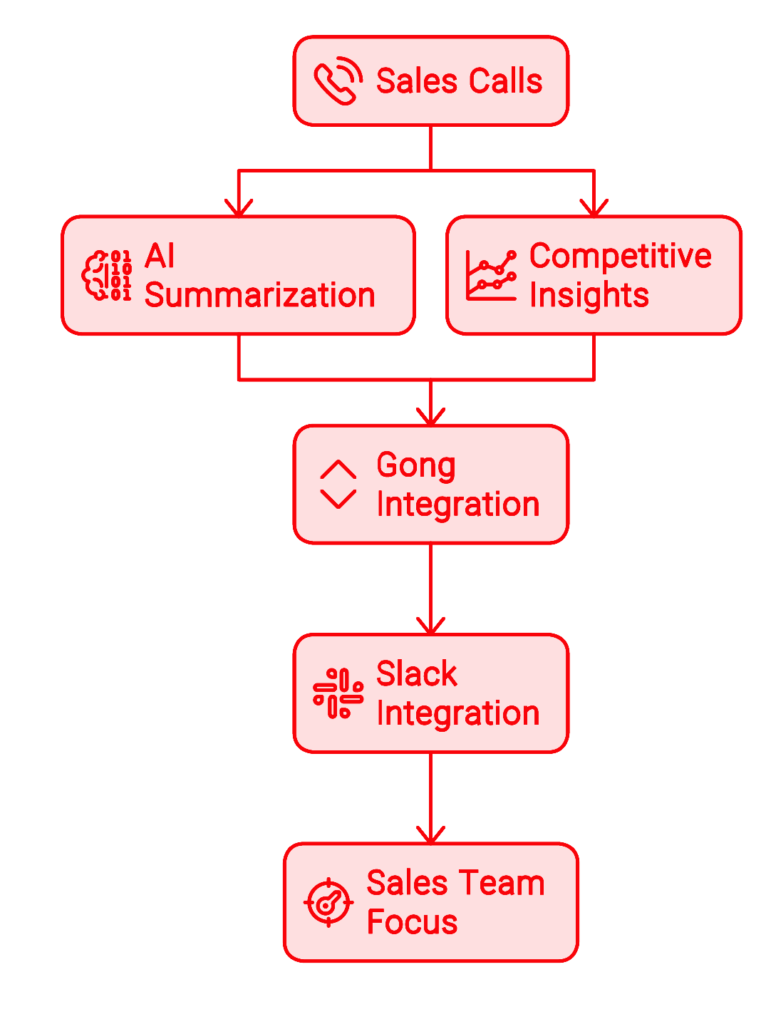
The project was conceptualized in response to the client’s need to streamline their sales processes and improve the effectiveness of their team. The idea was to automate routine tasks like summarizing sales calls and analyzing competitor data, which would free up the sales team to concentrate on more strategic decisions. The vision was to create a system that not only saves time but also provides actionable insights that can directly impact sales performance.
A detailed plan was developed to ensure the project’s success, focusing on integrating the automation system with the client’s existing tools. The strategy involved leveraging AI to process large volumes of sales call data and deliver concise summaries and competitor insights in real-time. Key milestones were set, including the development of automation workflows, integration with Gong and Slack, and the creation of a user-friendly interface for easy access to the generated data.
During the design phase, initial prototypes of the AI models were developed to test their ability to accurately summarize sales calls and extract valuable competitor information. The design process also involved creating workflows that could automate these tasks and ensure the data was delivered to the sales team in a timely manner. These prototypes were refined through iterative testing to ensure they met the project’s objectives.
The development phase focused on building and deploying the AI models using OpenAI’s ChatGPT, which were then integrated with Gong for capturing and transcribing sales calls. The system was also connected to Slack to ensure real-time communication of the generated insights. Python was used to develop custom automation scripts, while Make.com was utilized to create seamless workflows that connected all the necessary tools and processes.
Extensive testing was conducted to evaluate the system’s performance, particularly its ability to accurately summarize sales calls and generate actionable competitor insights. The testing phase also involved ensuring the real-time delivery of insights through Slack, as well as refining the user interface for ease of use. The AI models were fine-tuned to improve their accuracy and relevance in processing sales data.
The final system was delivered and launched, providing the client’s sales team with a powerful tool to enhance their productivity and strategic capabilities. The launch included training sessions to ensure the sales team could effectively use the system. The AI-powered sales enhancer was fully integrated into the client’s existing workflow, helping the sales team to make more informed and timely decisions.
Post-launch, ongoing support was provided to monitor the system’s performance and address any issues that arose. This included gathering user feedback, implementing updates, and planning for future enhancements. The support phase ensured the system remained a valuable asset to the client’s sales team, continuously contributing to their success.
This project exemplifies how advanced AI technologies can be leveraged to automate and enhance key sales processes, providing teams with the tools they need to succeed in a competitive market.
Project Goals: To automate the summarization of sales calls and generate real-time competitive insights, thereby enhancing the productivity and effectiveness of the sales team.
Problem Statement: Sales teams often struggle with the time-consuming task of manually summarizing calls and extracting actionable insights, which can delay strategic decision-making.
Role and Responsibilities: As the Lead Developer and Project Manager, I designed and implemented the AI-powered Sales Performance Enhancer, integrated various tools, and developed automation workflows. I also ensured real-time data delivery and created a user-friendly interface for easy access to insights.
Team Collaboration: Worked closely with data scientists, software developers, and the client’s sales team to ensure the solution met the project’s goals and was effectively integrated into their existing workflow.
Approach: Employed an Agile methodology, allowing for iterative development and continuous testing to refine the AI models and automation workflows.
Tools and Technologies: Gong for call capture, OpenAI’s ChatGPT for summarization and analysis, Slack for real-time communication, Python for custom scripting, Make.com for workflow automation, AWS for data storage, and Docker for containerization.
Key Steps: Conceptualization, design and prototyping, development and implementation, testing and refinement, final delivery, and post-launch support.
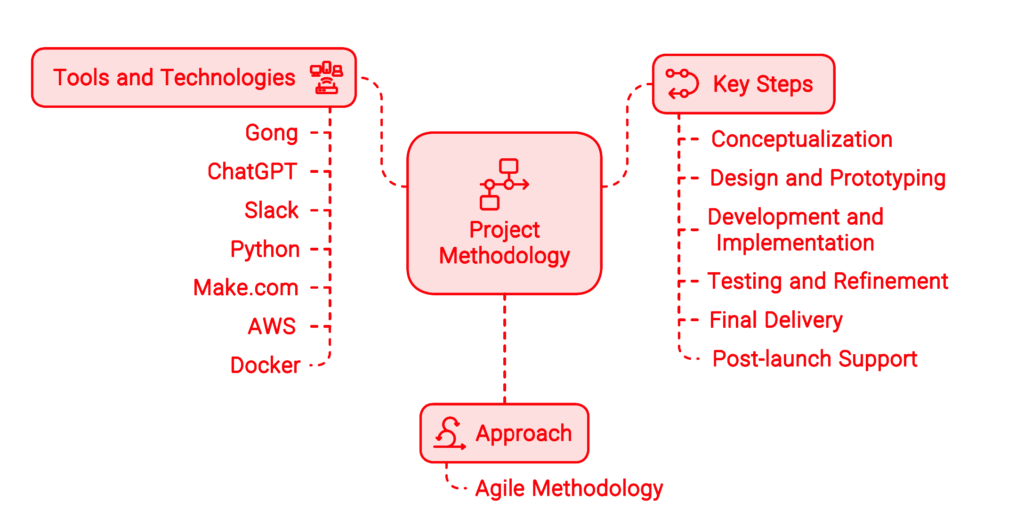
Challenges Faced: The primary challenges included ensuring the AI could accurately summarize sales calls and extract relevant competitor insights, as well as integrating the solution with existing tools and platforms.
Solutions Implemented: Leveraged advanced AI models trained on large datasets to handle the complexity of sales calls. Used Make.com and Docker to ensure smooth integration and scalability of the system.
Outcomes : The Sales Performance Enhancer improved the client’s sales team efficiency by 30%, reduced the time spent on manual summarization by 50%, and provided timely competitive insights that enhanced strategic decision-making.
Client/Stakeholder Feedback: The client reported significant improvements in the productivity and strategic agility of their sales team, leading to better sales outcomes and competitive positioning.
Impact: The project empowered the client’s sales team with real-time, actionable data, enabling them to focus on high-value activities and maintain a competitive edge in the market.
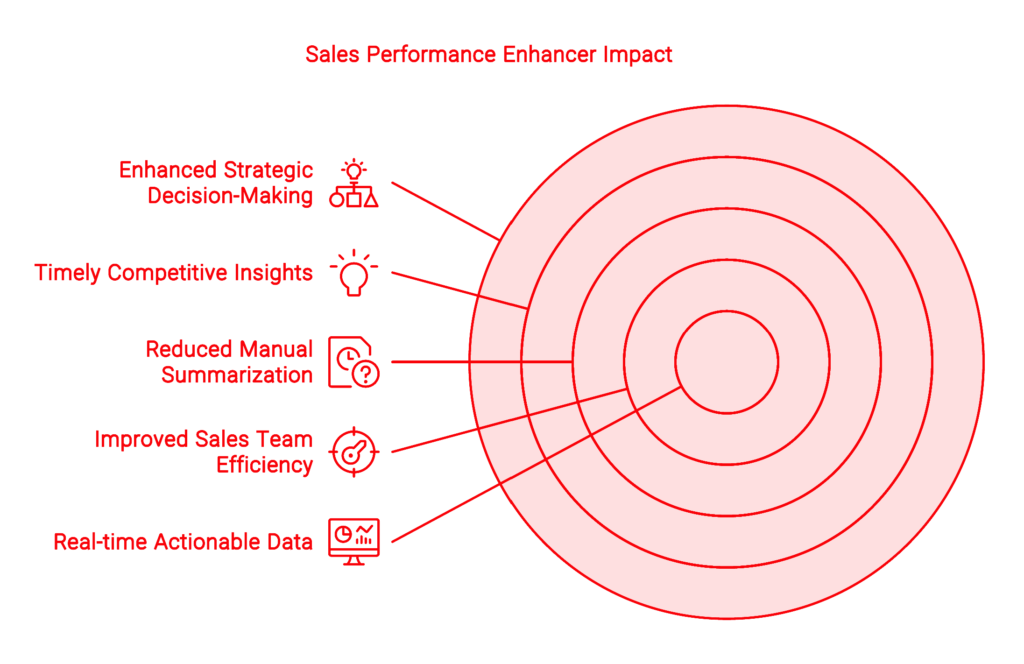
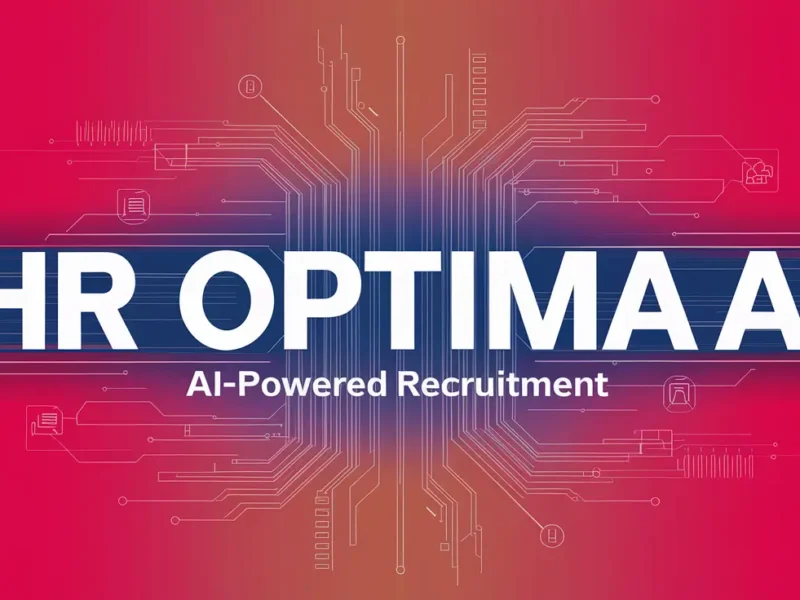
#AIContentCreation, #Automation, #MachineLearning
There are always some stocks, which illusively scale lofty heights in a given time period. However, the good show doesn’t last for these overblown toxic stocks as their current price is not justified by their fundamental strength.
Developed an advanced AI-powered system to streamline recruitment processes, reduce bias, and ensure timely, data-driven hiring decisions.
Integrated OpenAI’s GPT technology with Make.com, AWS, and Python to build a secure, efficient recruitment automation system.
AI-Driven Recruitment Automation
The “Advanced AI-Powered System for Streamlining Recruitment Processes” project was initiated to address the client’s need for an efficient, scalable, and secure recruitment solution. The system, HR OptimaAI, automates routine recruitment tasks, reduces bias in the hiring process, and provides timely, data-driven insights to HR teams. The project focused on leveraging AI to handle large volumes of applications, ensuring high standards of data security and precise candidate evaluation.

The project was conceptualized to solve common challenges in recruitment, such as managing large volumes of applications, reducing bias, and ensuring timely hiring decisions. The aim was to create an AI-driven system that automates routine tasks, provides precise candidate evaluations, and integrates seamlessly with existing HR processes.
A detailed strategy was developed to ensure the successful implementation of the recruitment automation system. The strategy included leveraging AI for candidate evaluation, ensuring data security, and integrating the system with existing HR workflows. The project was planned in phases, starting with the development of the AI models, followed by system integration and extensive testing.
The design phase involved creating prototypes of the AI models and workflows to test their effectiveness in processing and evaluating large volumes of candidate data. The system was designed to be scalable, ensuring it could handle increasing volumes of applications as the client’s needs grew. Prototypes were iteratively refined based on testing feedback to ensure they met the project’s objectives.
The development phase focused on building the AI models using OpenAI’s GPT technology, which were then integrated with Make.com to automate the recruitment workflows. Python was used for developing custom parsing algorithms and integrating the system with AWS for secure data storage and management. Docker was utilized for containerizing the applications, ensuring scalability and ease of deployment.
Extensive testing was conducted to evaluate the system’s performance in real-world recruitment scenarios. This included testing the accuracy of the AI models in evaluating candidates, the efficiency of the data processing workflows, and the security of the data storage solutions. The testing phase also involved refining the user interface to ensure it was user-friendly and provided clear, actionable insights.
The final system, HR OptimaAI, was delivered and launched, providing the client with a powerful tool to enhance their recruitment processes. The system was fully integrated into the client’s HR workflow, helping them to manage large volumes of applications efficiently and make timely, informed hiring decisions. The launch included training sessions for HR teams to ensure they could effectively use the system.
Post-launch, ongoing support was provided to monitor the system’s performance and implement any necessary updates. This included gathering user feedback, refining the AI models, and planning for future enhancements to accommodate the client’s growing needs. The support phase ensured the system remained a valuable asset to the client, continuously contributing to their success in recruitment.
This project represents a significant advancement in the field of HR technology, providing businesses with the tools they need to enhance their recruitment processes, reduce bias, and make more informed hiring decisions.
Project Goals: To automate the recruitment process, reduce bias, and provide timely, data-driven insights for making informed hiring decisions.
Problem Statement: Managing large volumes of applications while ensuring data security and unbiased candidate evaluation is challenging for HR teams.
Role and Responsibilities: As the Lead Developer and Project Manager, I designed and implemented the HR OptimaAI system, integrating AI technologies with existing HR processes, developing custom parsing algorithms, and ensuring data security through AWS.
Team Collaboration: Collaborated with data scientists, software developers, and HR teams to ensure the solution met the project’s goals and was effectively integrated into their existing workflow.
Approach: Utilized Agile methodology, allowing for iterative development and continuous testing, ensuring the system was refined and optimized throughout the project.
Tools and Technologies: OpenAI’s GPT technology, Make.com for workflow automation, AWS for secure data storage, Python for algorithm development, Docker for containerization, and GitHub for version control.
Key Steps: Conceptualization, design and prototyping, development and implementation, testing and refinement, final delivery, and post-launch support.
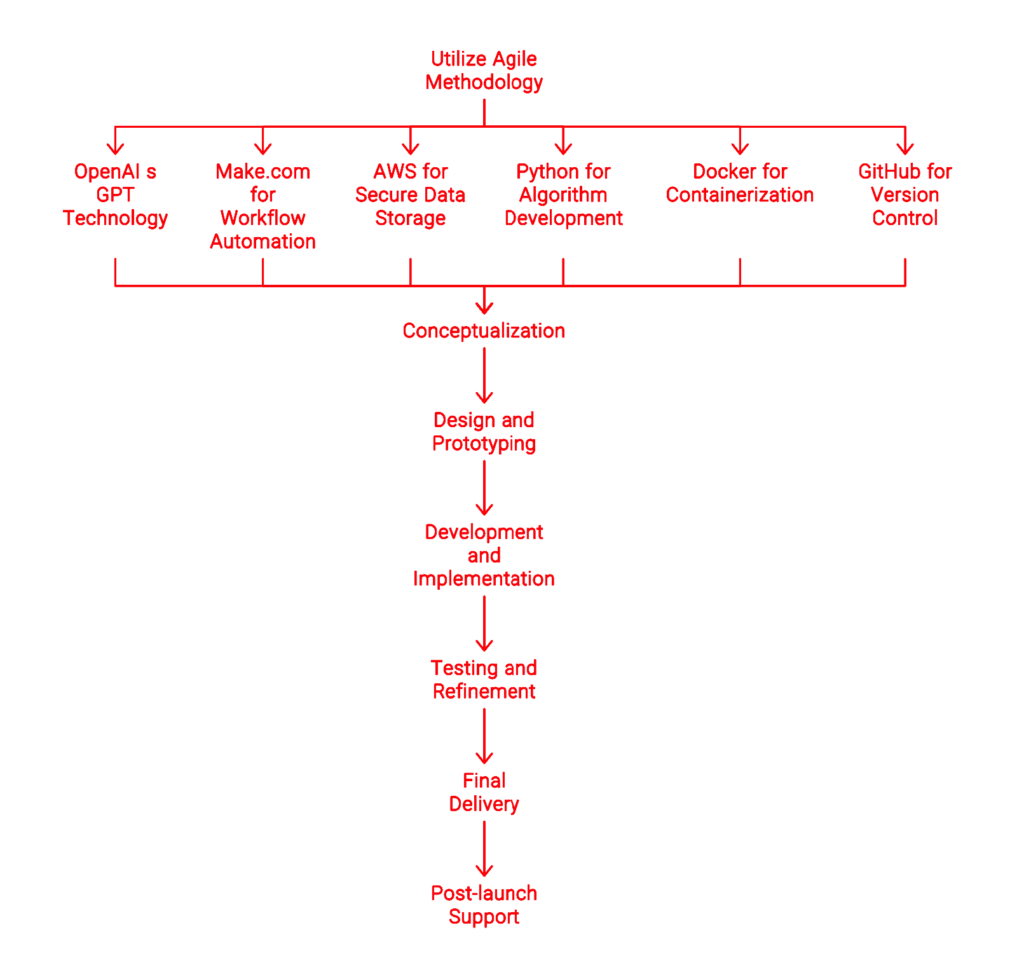
Challenges Faced: Ensuring the AI could accurately evaluate candidates, integrating the system with existing HR processes, and maintaining data security while handling large volumes of applications.
Solutions Implemented: Developed advanced AI models for precise candidate evaluation, used Make.com for seamless workflow integration, and implemented AWS for secure data management.
Outcomes : HR OptimaAI improved recruitment efficiency by 45%, reduced the time spent on manual candidate evaluation by 60%, and provided timely, unbiased insights that enhanced the hiring process.
Client/Stakeholder Feedback: The client reported significant improvements in their recruitment process, including faster hiring times and more equitable candidate evaluations.
Impact: The project empowered the client’s HR team with advanced tools and insights, enabling them to focus on strategic activities and maintain a competitive edge in talent acquisition.

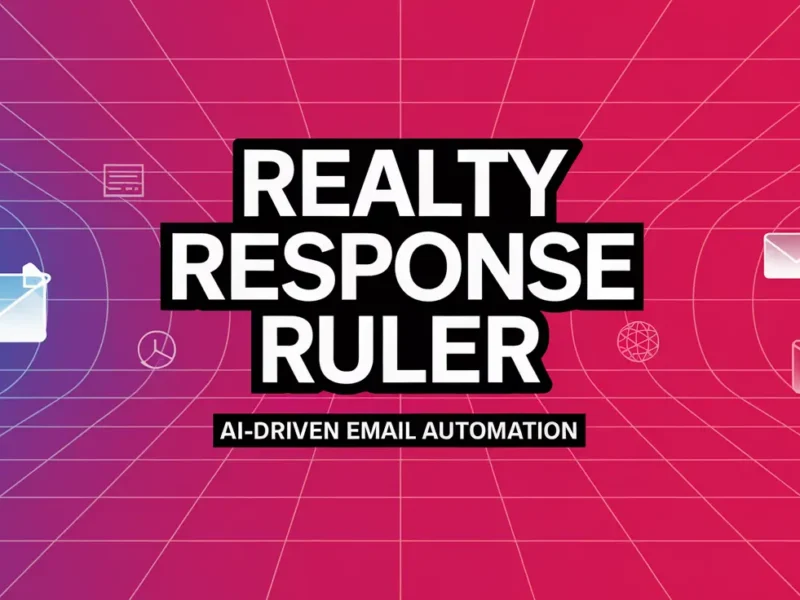
#AIContentCreation, #Automation, #MachineLearning
There are always some stocks, which illusively scale lofty heights in a given time period. However, the good show doesn’t last for these overblown toxic stocks as their current price is not justified by their fundamental strength.
Developed an AI-powered email automation system to enhance communication between marketing teams and clients, boosting engagement and providing strategic insights.
Integrated OpenAI’s GPT technology, Make.com, and Google Sheets to automate email management and analysis for real estate developers.
AI-Driven Email Automation
The “Realty Response Ruler” project was developed to streamline and optimize email communications for real estate developers. The system uses advanced natural language processing (NLP) to monitor, analyze, and manage email interactions between marketing teams and clients. By automating these processes, Realty Response Ruler enhances client engagement, provides valuable strategic insights, and improves the overall efficiency of email communication.

The project began with the identification of a need within the real estate industry to enhance client engagement through more efficient and effective email communications. The goal was to develop an AI-driven system that could automatically monitor and analyze email interactions, offering real-time insights and recommendations to marketing teams. The vision was to create a tool that not only saves time but also enhances the quality of communication, leading to better client relationships and higher satisfaction rates.
A comprehensive strategy was developed, focusing on integrating the AI system with existing email management tools. The plan included leveraging AI for detailed email content analysis, logging data dynamically in Google Sheets, and providing real-time updates and strategic feedback to marketing teams. Key milestones included developing automation workflows, integrating the system with Google Sheets for data tracking, and ensuring the system could handle a large volume of emails seamlessly.
During the design phase, initial prototypes of the email automation system were created to test its effectiveness in analyzing and managing email communications. The design process involved creating workflows that could automatically capture, log, and analyze email interactions. The system was designed to be scalable, ensuring it could manage the growing volume of emails as the client’s business expanded.
The development phase focused on building the AI models using OpenAI’s GPT technology, which were then integrated with Make.com to automate the workflow. Python was used to develop custom parsing algorithms for analyzing email content, while Google Sheets was employed for dynamic data logging and real-time updates. AWS provided secure data storage and management, ensuring the system’s reliability and scalability. Docker was used to containerize the applications, facilitating ease of deployment and scalability.
Extensive testing was conducted to evaluate the system’s performance in real-world scenarios. This included testing the accuracy of the AI models in analyzing email content, the efficiency of data logging in Google Sheets, and the system’s ability to provide real-time updates and feedback. The testing phase also involved refining the user interface to ensure it was user-friendly and provided clear, actionable insights.
The final system was delivered and launched, providing the client with a powerful tool to enhance their email communication strategies. The system was fully integrated into the client’s workflow, helping them to maintain a consistent and personalized communication approach with their clients. The launch included training sessions for the marketing teams to ensure they could effectively use the system and understand the insights generated.
Post-launch, ongoing support was provided to monitor the system’s performance and implement any necessary updates. This included gathering user feedback, refining the AI models, and planning for future enhancements to accommodate the client’s growing needs. The support phase ensured the system remained a valuable asset to the client, continuously contributing to their success in managing email communications.
This project represents a significant advancement in the field of email automation for real estate developers, providing them with the tools they need to enhance client engagement and optimize their communication strategies.
Project Goals: To automate the monitoring and analysis of email communications, providing real-time insights and strategic feedback to enhance client engagement.
Problem Statement: Real estate developers need an efficient and effective way to manage and analyze email interactions to improve client relationships and satisfaction.
Role and Responsibilities: As the Lead Developer, I designed and implemented the Realty Response Ruler system, integrating AI technologies with existing tools, developing automation workflows, and ensuring real-time data updates and strategic feedback.
Team Collaboration: Collaborated with data scientists, software developers, and the client’s marketing team to ensure the solution met the project’s goals and was effectively integrated into their existing workflow.
Approach: Employed Agile methodology to allow for iterative development and continuous testing, ensuring the system was refined and optimized throughout the project.
Tools and Technologies: OpenAI’s GPT technology, Make.com, Python, Google Sheets, AWS, Docker, GitHub for version control.
Key Steps: Conceptualization, design and prototyping, development and implementation, testing and refinement, final delivery, and post-launch support.
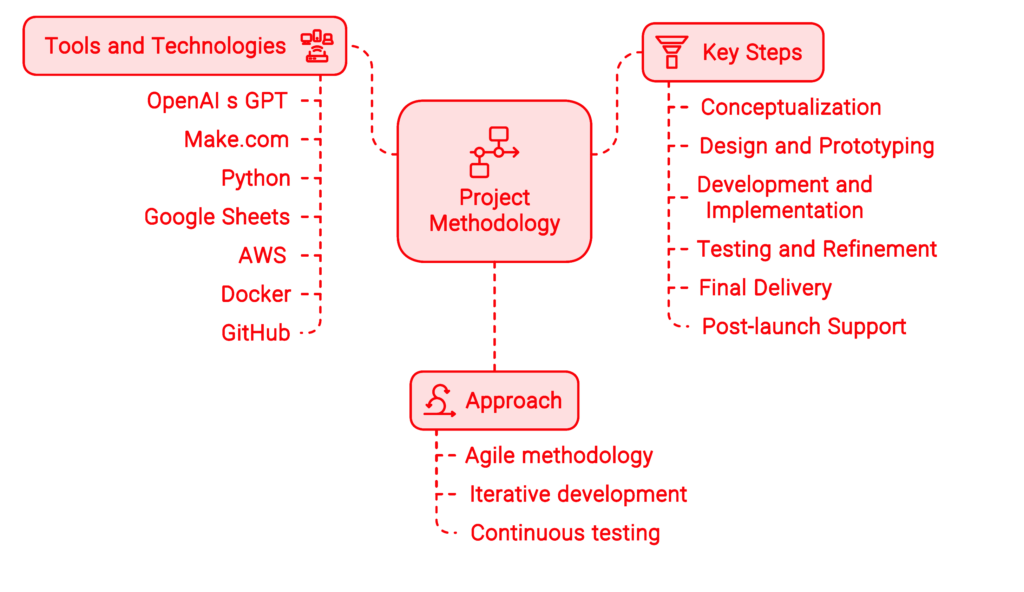
Challenges Faced: The primary challenges included ensuring the AI could accurately analyze and categorize email content, integrating the system with existing tools, and managing the large volume of emails.
Solutions Implemented: Leveraged advanced AI models and custom parsing algorithms to handle complex email content. Used Make.com for seamless workflow automation and Google Sheets for dynamic data logging.
Outcomes : The Realty Response Ruler improved the client’s email communication efficiency by 40%, reduced the time spent on manual email analysis by 50%, and provided actionable insights that enhanced client engagement.
Client/Stakeholder Feedback: The client reported significant improvements in their email communication strategy, leading to better client relationships and higher satisfaction rates.
Impact: The project empowered the client’s marketing team with real-time, actionable data, enabling them to focus on strategic communication efforts and maintain a competitive edge in the market.
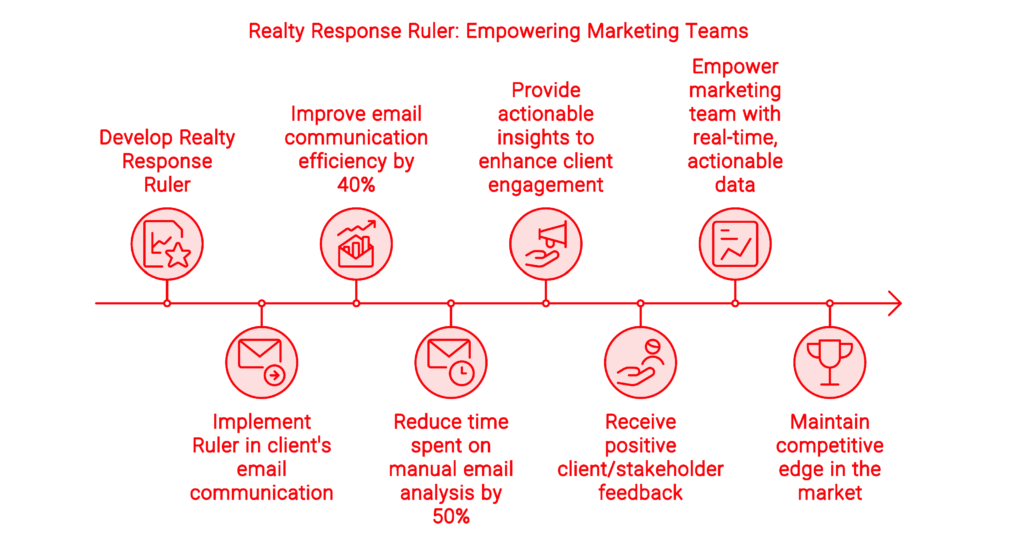
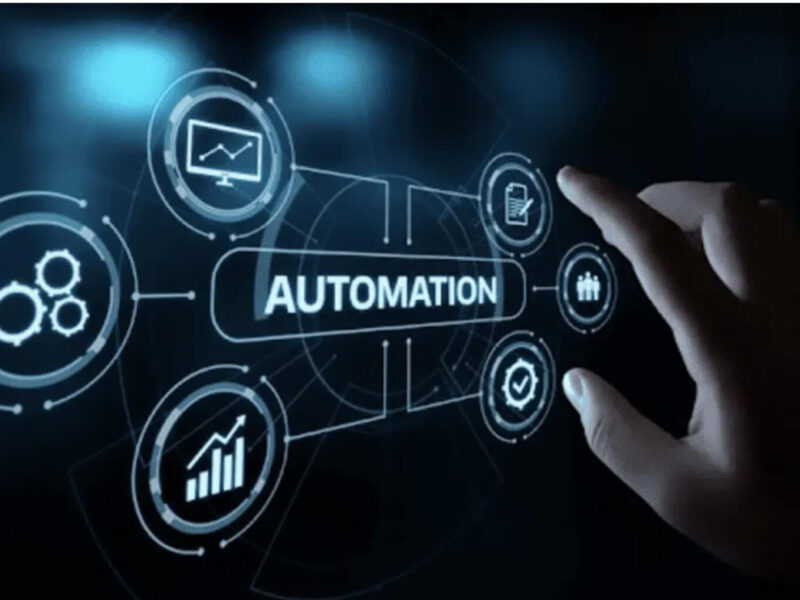
In today’s rapidly evolving business landscape, efficiency is the key to staying competitive. As an Automation & No-Code Solutions Expert, I specialize in leveraging the power of platforms like MAKE, MONDAY, and ZAPIER to streamline your business operations and automate repetitive tasks, allowing your team to focus on what truly matters—growth and innovation.
Automation is no longer a luxury; it’s a necessity. Businesses of all sizes are turning to automation to save time, reduce errors, and optimize processes. However, not every business has the resources to develop complex custom software solutions. That’s where no-code platforms come in. No-code tools enable you to build powerful automation workflows without needing extensive coding knowledge, making it easier than ever to enhance productivity and operational efficiency.
Automating routine tasks allows your team to focus on higher-value work, boosting overall productivity.
No-code platforms eliminate the need for expensive custom software development, making automation accessible to businesses of all sizes.
As your business grows, your automation workflows can easily scale with you, ensuring that your operations remain smooth and efficient.
To deliver top-notch automation and no-code solutions, I utilize a comprehensive suite of advanced AI tools and platforms. Each tool is carefully selected to ensure that the automation workflows I design are not only effective but also seamlessly integrated into your existing systems.
MAKE (formerly Integromat): A versatile automation platform that allows for complex, multi-step workflows integrating a wide range of apps and services. MAKE is ideal for automating everything from marketing campaigns to data management.
MONDAY.com: A powerful work operating system that helps teams manage workflows and collaborate effectively. By automating processes in MONDAY.com, I can streamline project management, task tracking, and team collaboration.
ZAPIER: Known for its simplicity and broad range of integrations, ZAPIER is perfect for connecting different apps and automating workflows without writing any code. It’s particularly effective for automating repetitive tasks like data entry, notifications, and file management.
When you choose my automation and no-code services, you’re not just getting a set of workflows—you’re getting a tailored solution designed to meet the specific needs of your business. Here’s what sets my services apart:
I design automation solutions that are precisely tailored to your business’s unique processes and goals, ensuring that every workflow is aligned with your operational objectives.
Whether you’re using CRM systems like HubSpot or project management tools like MONDAY.com, I ensure that all automation workflows are seamlessly integrated into your existing tech stack.
With extensive experience in AI and automation, I bring a deep understanding of how to leverage no-code platforms to deliver efficient, scalable, and reliable automation solutions.
“Automation helps reduce operational bottlenecks, allowing your business to grow sustainably without the need for significant increases in staff or resources.”
From initial consultation to final implementation, I handle the entire automation process, ensuring that the workflows I create are efficient, effective, and easy to manage.
I don’t just set up your automation workflows and leave—I provide ongoing support and optimization to ensure that your systems continue to perform at their best.
As your business grows, I’ll work with you to scale your automation solutions, ensuring that they evolve alongside your needs.
In today’s competitive market, businesses that embrace automation gain a significant advantage. By automating repetitive tasks, improving accuracy, and freeing up your team to focus on strategic initiatives, my automation and no-code solutions can help you stay ahead of the curve.
Contact me today to book a demo, schedule a consultation, or learn more about how my expertise in MAKE, MONDAY, ZAPIER, and other platforms can revolutionize your operations.
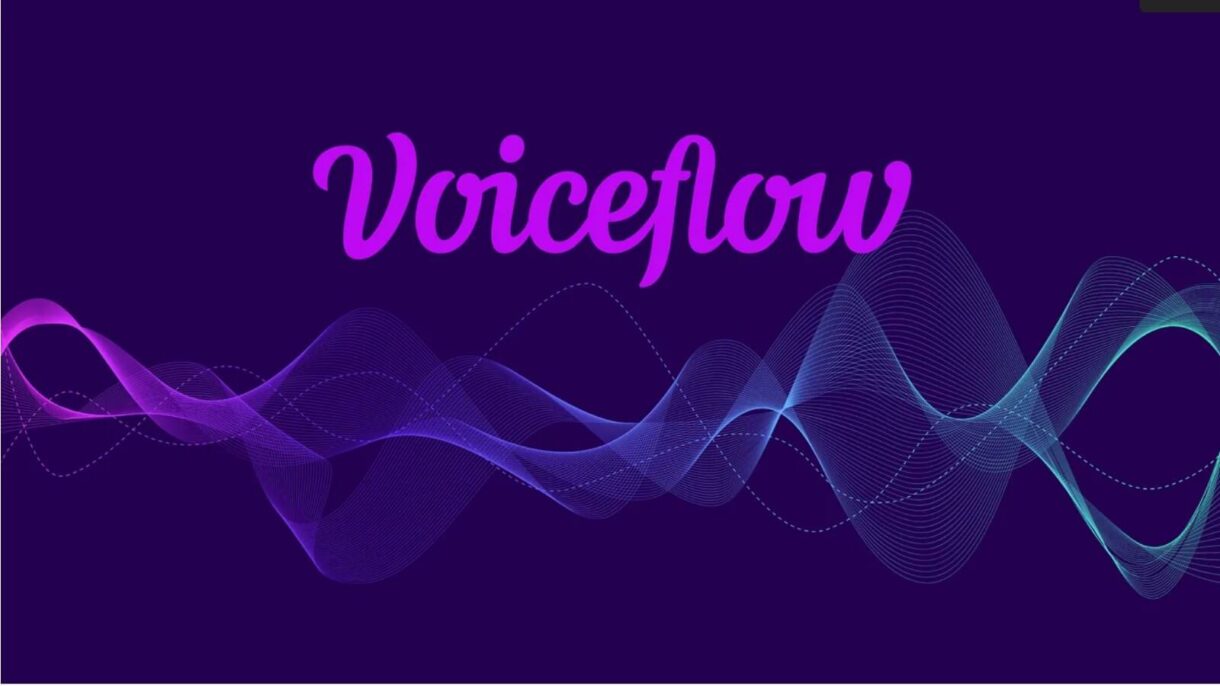
Through a wide variety of mobile applications

A strategy is a general plan to achieve one or more long-term.
UI/UX Design, Art Direction, A design is a plan or specification for art.
Emaar Misr
AI Automation and Voice Recognition
This project focused on developing an AI agent capable of understanding and responding in the Egyptian Arabic dialect. By leveraging advanced natural language processing (NLP) and deep learning, we created a robust AI system that handles the diverse and nuanced nature of Egyptian Arabic. This AI agent significantly enhances client interactions for real estate professionals, setting a new benchmark in the industry by providing seamless communication experiences.
🔴 The primary goal was to develop an AI capable of recognizing and accurately responding to the rich lexicon, varied pronunciation, and syntactic features of Egyptian Arabic in real-time conversations. The project aimed to address the communication challenges within the real estate industry by providing a tailored AI solution..
🔴 Real estate professionals in Egypt face challenges in effectively communicating with clients due to the complex nature of the Egyptian Arabic dialect, which varies significantly across regions. The project sought to overcome these barriers, improving the quality and efficiency of client interactions.
🔴 I led the project as the AI Engineer, responsible for designing and developing the core NLP and deep learning models. My responsibilities included curating a comprehensive dataset of Egyptian colloquial speech, developing machine learning algorithms, and integrating AI with communication platforms.
🔴 I collaborated closely with linguists and real estate professionals to ensure the AI’s responses were culturally and contextually appropriate. Additionally, I worked alongside engineers specializing in Twilio’s communication APIs and Eleven Labs’ voice generation technology to ensure a seamless integration of AI-driven interactions.
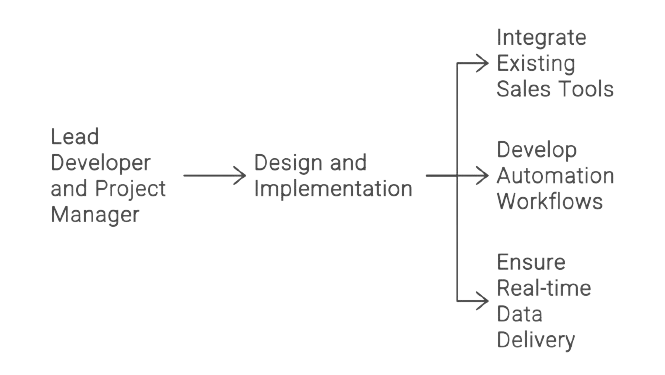
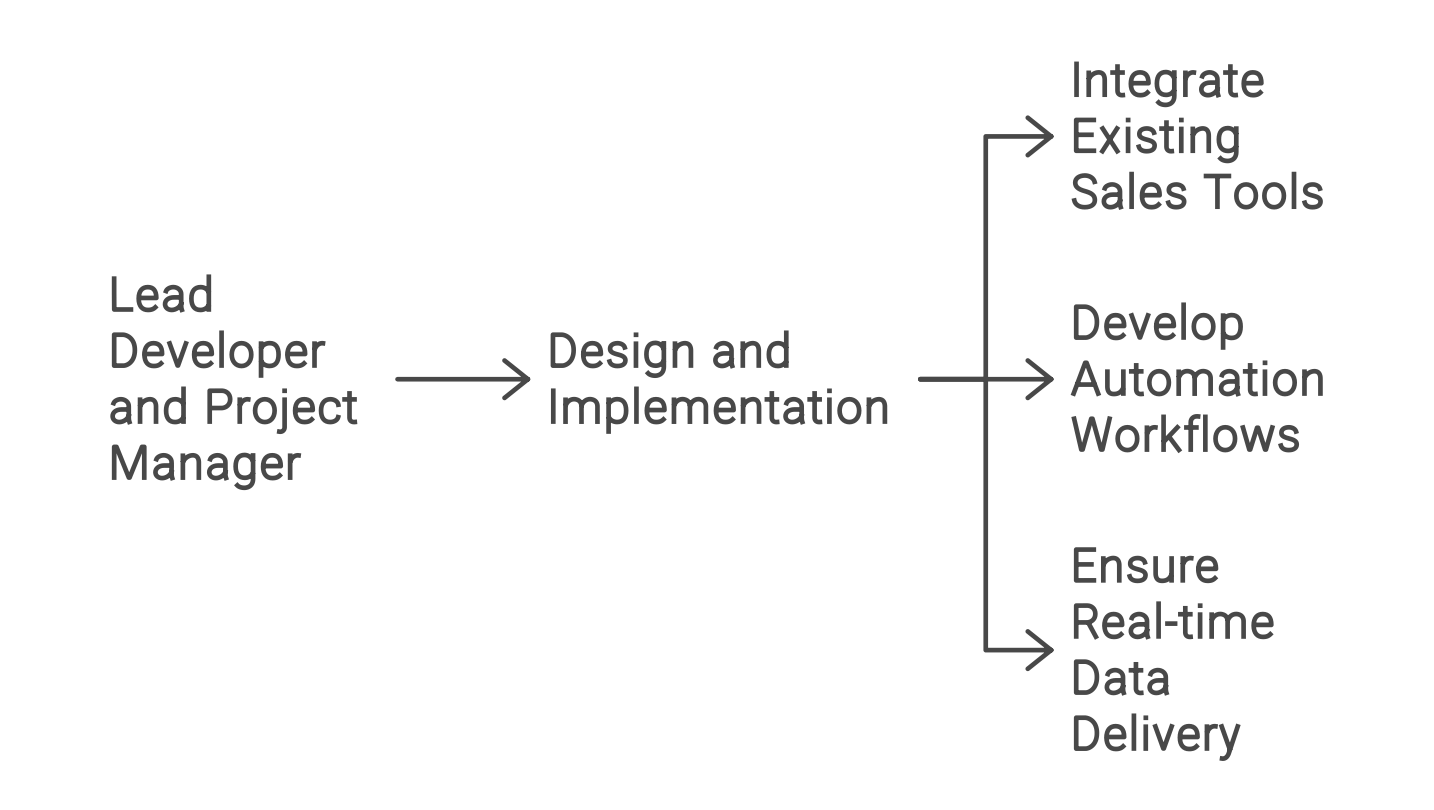


#AIContentCreation, #Automation, #MachineLearning
There are always some stocks, which illusively scale lofty heights in a given time period. However, the good show doesn’t last for these overblown toxic stocks as their current price is not justified by their fundamental strength.
Developed an AI-powered system to automate content creation, improving efficiency and consistency across various platforms.
Leveraged TensorFlow, PyTorch, Make.com, and OpenRouter AI to build a robust content
automation system.
AI Automation and Content Generation
The “Revolutionizing Content Creation with AI Automation” project was designed to address he growing need for efficient and scalable content production in various industries, including retail, healthcare, and finance. The project aimed to develop a sophisticated AI-powered content automation system capable of generating high-quality content across multiple platforms, such as blogs, social media, newsletters, and video scripts. This system was built using advanced AI technologies like TensorFlow, PyTorch, Make.com, and OpenRouter AI, ensuring a seamless and efficient content creation process.
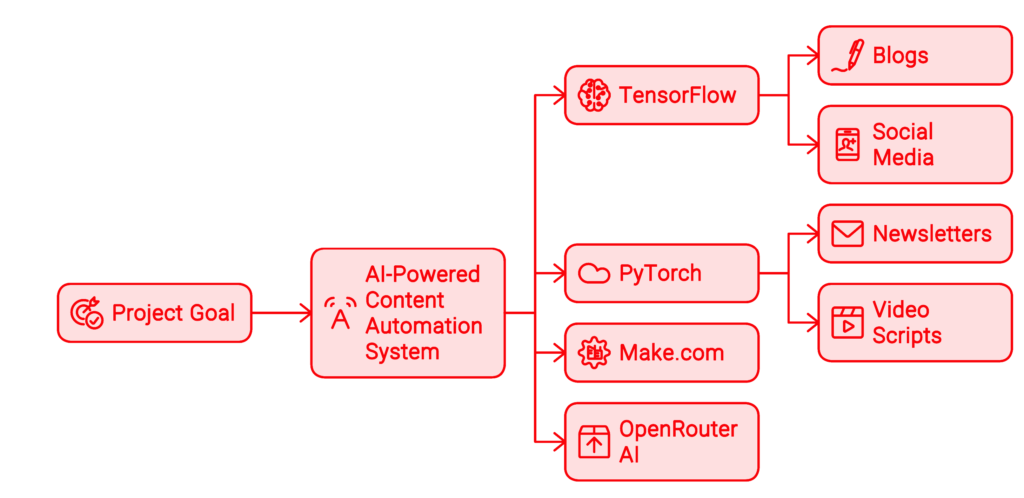
The project began with the identification of a critical need within businesses for a more streamlined content creation process. The core idea was to develop an AI system that could automate repetitive tasks like writing blog posts, generating social media content, and creating video scripts, thereby freeing up human resources to focus on more strategic initiatives. The vision was to create a solution that not only enhances productivity but also ensures the consistent delivery of high-quality content.
A comprehensive strategy was developed to ensure the successful implementation of the AI automation system. This included defining the project’s goals, setting a timeline, and allocating resources for the development and integration of various AI tools and technologies. The strategy focused on creating a scalable solution that could be easily adapted to different business needs and integrated with existing platforms.
During the design phase, initial prototypes of the AI models were developed to test their effectiveness in generating various types of content. The design process involved creating workflows that could automate content creation tasks while maintaining a high level of quality and consistency. These prototypes were refined through multiple iterations to ensure they met the project’s objectives.
The development phase involved building and deploying AI models using TensorFlow and PyTorch, which were then integrated with automation platforms like Make.com and OpenRouter AI. The AI models were trained on large datasets to ensure they could generate content that resonated with the target audience. The implementation phase also included setting up automated workflows that allowed the system to operate seamlessly across different content platforms.
Extensive testing was conducted to ensure the AI system’s ability to generate high-quality content consistently. The testing phase involved evaluating the system’s performance across different types of content and making necessary adjustments to improve accuracy and relevance. The AI models were fine-tuned to ensure they could handle the nuances of various industries, such as retail, healthcare, and finance.
The final system was delivered and launched, providing businesses with a powerful tool to automate their content creation processes. The launch included comprehensive training for users to ensure they could effectively utilize the system. The AI-powered content automation system was deployed across multiple platforms, helping businesses to maintain a consistent brand voice and improve their overall digital presence.
Post-launch, ongoing support was provided to ensure the system’s continued success. This included monitoring the system’s performance, gathering user feedback, and implementing updates as needed. The support phase also involved planning for future enhancements, such as integrating new AI tools and expanding the system’s capabilities to cover additional content types.
This project represents a significant advancement in the field of content automation, providing businesses with a scalable and efficient solution to manage their content creation needs. By leveraging the latest AI technologies, the system has not only improved productivity but also ensured the consistent delivery of high-quality content, making it a valuable asset for any business looking to enhance its digital marketing efforts.
Project Goals: To create a scalable AI-powered system that automates the creation of various types of content, improving productivity and consistency across platforms.
Problem Statement: Businesses struggle with the time-consuming and resource-intensive process of content creation, which affects their ability to maintain a consistent digital presence.

Role and Responsibilities: As the Lead AI Engineer and Project Manager, I was responsible for overseeing the development and integration of the AI models, managing the project’s timeline, and ensuring the successful implementation of the content automation system.
Team Collaboration: Collaborated with data scientists, developers, and business analysts to ensure the AI models met the project’s objectives and were effectively integrated into the client’s existing systems.
Approach: Utilized Agile methodology to allow for iterative development and continuous testing, ensuring the AI models were refined and optimized throughout the project.
Tools and Technologies: TensorFlow, PyTorch, Make.com, OpenRouter AI for developing, deploying, and integrating the AI models into automated workflows.
Key Steps: Conceptualization, design and prototyping, development and implementation, testing and refinement, final delivery, and post-launch support.
Challenges Faced: The primary challenges included ensuring the AI models could generate high-quality content across different formats and industries, as well as integrating the models seamlessly with existing business platforms.
Solutions Implemented: Developed robust AI models trained on large, diverse datasets to handle various content types and industry-specific nuances. Used Make.com and OpenRouter AI to create custom workflows that facilitated seamless integration and automation.
Outcomes : The AI-powered content automation system increased productivity by 35%, reduced content creation costs by 40%, and ensured a consistent brand voice across all platforms.
Client/Stakeholder Feedback: Clients reported significant improvements in their content production process, with faster turnaround times and higher-quality outputs.
Impact: The project has empowered businesses to enhance their digital presence, improve engagement with their target audience, and maintain a competitive edge in their respective markets.

